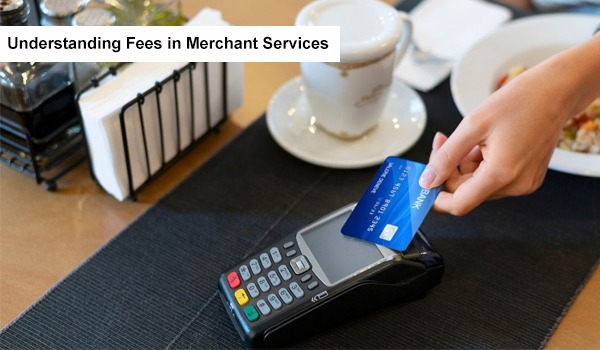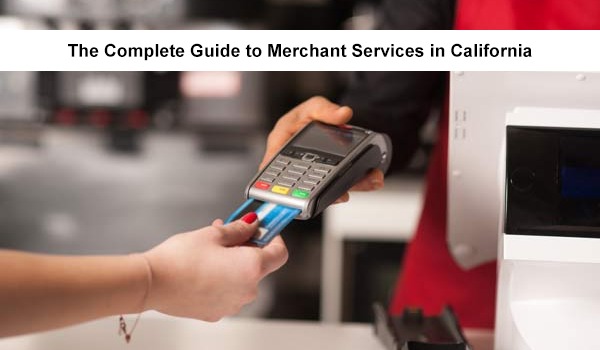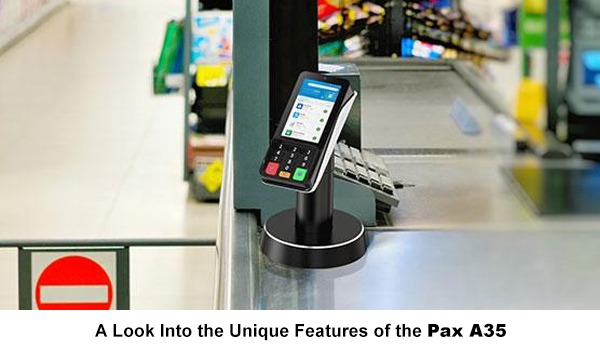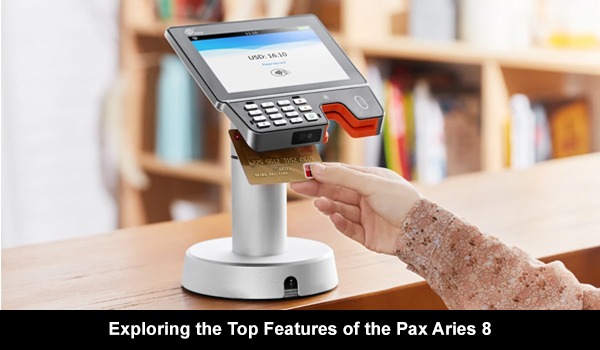
Introduction
In today's interconnected digital landscape, online transactions' ease and convenience have revolutionized how we conduct business and manage our finances. Whether it's ordering goods, subscribing to services, or settling bills, the seamless nature of online payment processing has become an indispensable part of our daily lives. However, amidst this convenience lies a critical responsibility: safeguarding customers' sensitive financial information. Ensuring payment processing security isn't just a necessity; it's a cornerstone of building and preserving trust in your brand.
In this article, we delve into the essential best practices that online businesses must adopt to fortify the security of their payment processing systems. By implementing these strategies, merchants can protect their customers' data from potential threats and bolster their reputation as trustworthy entities in the digital realm.
Encryption Protocols
Encryption stands as the bedrock of online security, serving as the first and foremost defense against unauthorized access to sensitive data. Robust encryption protocols play a pivotal role in ensuring that payment information traversing the digital landscape remains shielded from prying eyes. By encrypting data during transmission, businesses can safeguard vital financial details from interception and exploitation by malicious actors.
Implementing Robust Encryption
Deploying state-of-the-art encryption protocols is paramount for fortifying the security of payment processing systems. Technologies like Transport Layer Security (TLS), encompassing predecessors such as Secure Sockets Layer (SSL), are instrumental in encrypting data exchanges between customers' browsers and the server. This encryption creates a secure tunnel through which sensitive information can travel, rendering it incomprehensible to anyone attempting to intercept it unlawfully.
Adherence to Industry Standards
In addition to deploying encryption protocols, adherence to industry standards is imperative for ensuring the efficacy of security measures. The Payment Card Industry Data Security Standard (PCI DSS) delineates comprehensive guidelines and requirements for safeguarding payment card data. Compliance with PCI DSS not only ensures that encryption practices meet stringent security benchmarks but also instills confidence among customers regarding the protection of their financial information.
Regular Protocol Updates
The digital landscape is constantly evolving, with emerging threats and vulnerabilities necessitating continuous adaptation of security measures. Regularly updating encryption protocols is essential for staying abreast of evolving cybersecurity threats and bolstering the resilience of payment processing systems. By promptly implementing security patches and enhancements, businesses can preemptively mitigate potential risks and uphold the integrity of their encryption infrastructure.
Vigilance Against Emerging Threats
Remaining vigilant against emerging threats is paramount in the realm of cybersecurity. Hackers and cybercriminals are constantly devising new tactics to circumvent encryption defenses and exploit vulnerabilities in payment processing systems. Staying informed about the latest cybersecurity trends and threat intelligence enables businesses to proactively identify and counteract potential risks. Through ongoing monitoring and threat assessment, organizations can fortify their encryption protocols against emerging threats, thereby ensuring the continued security of payment transactions.
Collaboration and Knowledge Sharing
The landscape of cybersecurity is a dynamic and complex ecosystem, necessitating collaboration and knowledge sharing among industry peers. Participating in information-sharing initiatives, such as threat intelligence platforms and industry forums, facilitates the exchange of insights and best practices for enhancing encryption protocols. By leveraging collective expertise and experience, businesses can strengthen their encryption defenses and fortify the security of payment processing systems against evolving threats.
Encryption protocols form the cornerstone of secure payment processing, providing a robust defense against unauthorized access to sensitive data. By implementing state-of-the-art encryption technologies, adhering to industry standards, regularly updating protocols, remaining vigilant against emerging threats, and fostering collaboration within the cybersecurity community, businesses can safeguard the integrity of their payment processing systems and uphold the trust of their customers.
Tokenization Technology
Tokenization technology represents a groundbreaking advancement in the realm of cybersecurity, offering a highly effective method for protecting sensitive payment data. By replacing actual payment information with unique tokens, businesses can significantly reduce the risk of data breaches and mitigate the potential impact of security incidents.
Understanding Tokenization
Tokenization operates on a simple yet ingenious premise: when a customer initiates a transaction, their payment details, such as credit card numbers or bank account information, are substituted with randomly generated tokens. These tokens serve as surrogate placeholders for the actual data, ensuring that sensitive information remains concealed throughout the transaction process. Unlike traditional methods of storing payment data, which involve retaining actual card numbers within databases, tokenization ensures that even if a breach occurs, the exposed tokens lack any valuable data, making them ineffective for cybercriminals.
Enhanced Security and Reduced Risk
The primary advantage of tokenization lies in its ability to enhance security and reduce the risk of data breaches. By replacing sensitive payment data with tokens, businesses effectively eliminate the possibility of unauthorized access to valuable financial information. Even in the event of a security breach or data compromise, the tokens remain inert and devoid of any exploitable content, thus safeguarding customers' sensitive data from falling into the wrong hands.
Streamlined Compliance and Regulatory Alignment
Implementing tokenization technology yields additional benefits beyond enhanced security. One notable advantage is the minimization of the scope of compliance requirements, particularly about the Payment Card Industry Data Security Standard (PCI DSS). Since tokenization obviates the need to store actual payment data within the business's systems, organizations can significantly reduce their compliance burden and streamline the certification process. By adhering to PCI DSS guidelines and leveraging tokenization, businesses can ensure regulatory alignment while simultaneously fortifying their security posture.
Seamless Recurring Payments and Customer Convenience
Tokenization not only enhances security but also facilitates seamless recurring payments, thereby enhancing the overall customer experience. By associating tokens with customer accounts, businesses can securely store payment credentials for future transactions without compromising sensitive data. This capability not only simplifies the checkout process for customers but also fosters loyalty and trust by offering a convenient and hassle-free payment experience. Whether it's monthly subscriptions, membership renewals, or automatic bill payments, tokenization enables businesses to provide uninterrupted services while safeguarding customers' financial information.
Fostering Customer Trust and Loyalty
Ultimately, tokenization technology plays a pivotal role in fostering customer trust and loyalty. By proactively safeguarding sensitive financial information, businesses demonstrate their commitment to prioritizing the security and privacy of their customers. This proactive approach not only instills confidence in the integrity of the payment process but also enhances the overall perception of the brand. Businesses that prioritize their customers' security and privacy are more likely to cultivate stronger relationships and foster increased loyalty over time.
As cyber threats continue to evolve, tokenization remains a crucial tool in the arsenal of measures aimed at safeguarding the integrity of payment processing systems and preserving the trust of consumers
Multi-Factor Authentication (MFA)
Multi-factor authentication (MFA) stands as a cornerstone of modern cybersecurity, providing an additional layer of defense against unauthorized access to sensitive systems and accounts. In the context of payment processing, MFA serves as a critical safeguard, bolstering security measures to protect valuable financial data from exploitation by malicious actors.
Understanding Multi-Factor Authentication
At its core, MFA requires users to verify their identity through multiple authentication factors, thereby enhancing the robustness of the authentication process. These factors are in three categories:
- Something the User Knows: This could include a password, PIN, or passphrase—information that only the authorized user should possess.
- Something the User Has: This factor involves possession of a physical device or token, such as a mobile phone, smart card, or security key. The user must possess this item to complete the authentication process successfully.
- Something the User Is: Biometric data, such as fingerprints, facial recognition, or iris scans, serves as a unique identifier tied to the individual's physical characteristics.
By combining these distinct authentication factors, MFA significantly reduces the likelihood of unauthorized access, as potential attackers would need to compromise multiple layers of security to gain entry.
Mitigating Risks of Compromised Credentials
One of the primary benefits of MFA is its effectiveness in mitigating the risks associated with compromised credentials. In scenarios where login credentials, such as passwords, are compromised through methods like phishing or credential stuffing attacks, MFA acts as a crucial line of defense. Even if malicious actors acquire the user's password, accessing the secondary authentication factor is still necessary for a successful account breach. This multi-layered approach substantially raises the bar for attackers, making unauthorized access significantly more challenging to achieve.
Utilizing One-Time Passwords and Authenticator Apps
Common implementations of MFA in payment processing environments include the use of one-time passwords (OTPs) and authenticator apps. OTPs, typically delivered via SMS or email, provide users with a temporary code that must be entered alongside their primary credentials during the login process. Authenticator apps, on the other hand, generate time-based or event-based OTPs directly on the user's mobile device, eliminating the need for network connectivity and offering enhanced security.
These methods introduce an additional barrier against fraudulent activities, as the temporary nature of OTPs ensures that they cannot be reused or intercepted by malicious parties.
Authenticator apps, in particular, provide a seamless and secure means of generating authentication codes, further enhancing the overall security posture of payment processing systems.
Methods such as one-time passwords (OTPs) and authenticator apps offer practical and effective means of implementing MFA in payment processing environments, enhancing overall security, and protecting valuable financial data from exploitation.
Regular Security Audits and Penetration Testing
Regular security audits and penetration testing are indispensable components of a robust cybersecurity strategy, especially in the context of payment processing systems. These proactive measures play a pivotal role in identifying and mitigating vulnerabilities before they can be exploited by malicious actors, thereby safeguarding sensitive financial data and bolstering the resilience of payment processing systems.
Conducting Comprehensive Security Audits
Security audits systematically evaluate an organization's security infrastructure, policies, and procedures. By conducting regular audits, businesses can gain valuable insights into their security posture, identify potential weaknesses, and assess compliance with industry standards and regulations. Audits typically involve reviewing network configurations, access controls, encryption protocols, incident response plans, and other critical security controls. Through comprehensive audits, organizations can proactively identify areas for improvement and implement remediation measures to enhance the overall security posture of their payment processing systems.
Penetration Testing
Penetration testing, also known as ethical hacking, simulates real-world cyberattacks to assess the effectiveness of existing security controls and identify vulnerabilities that could be exploited by attackers. Ethical hackers employ a variety of techniques and tools to probe for weaknesses in the organization's infrastructure, applications, and defenses. By mimicking the tactics and techniques used by malicious actors, penetration testing helps organizations identify and prioritize security risks based on their likelihood and potential impact.
Benefits of Penetration Testing
Penetration testing offers organizations a multitude of benefits, including:
- Identification of Vulnerabilities: Penetration testing helps uncover vulnerabilities that may not be apparent through traditional security assessments. By identifying weaknesses in systems and applications, organizations can take proactive measures to address security gaps and mitigate potential risks.
- Risk Prioritization: Penetration testing allows organizations to prioritize security risks based on their severity and potential impact on the business. By understanding the relative risk posed by different vulnerabilities, organizations can allocate resources more effectively to address high-priority issues first.
- Validating Security Measures: Penetration testing ensures the effectiveness of an organization's security controls and measures. By testing the resilience of security defenses against simulated attacks, organizations can gain confidence in their ability to withstand real-world threats.
- Compliance Requirements: Penetration testing is often required to meet regulatory compliance requirements, such as the Payment Card Industry Data Security Standard (PCI DSS) and other industry-specific mandates.
Regular security audits and penetration testing are essential components of a proactive cybersecurity strategy for payment processing systems.
Employee Training and Awareness
Comprehensive Training on Security Best Practices
Providing employees with comprehensive training on security best practices is paramount to equipping them with the knowledge and skills necessary to safeguard payment information effectively. Training programs should encompass an extensive array of subjects, such as:
- Identifying phishing attempts and social engineering tactics.
- Recognizing suspicious emails, links, and attachments.
- Understanding the importance of strong password hygiene and multi-factor authentication.
- Handling sensitive data securely, both online and offline.
- Following company policies and procedures regarding information security.
By empowering employees with the requisite knowledge and awareness, organizations can significantly reduce the likelihood of falling victim to common cyber threats and mitigate the risk of security breaches.
Staying Ahead: Updates on Emerging Threats and Security Protocols
Cyber threats are constantly evolving, requiring organizations to remain vigilant and adaptable in their security practices. Regularly updating employees on emerging threats, vulnerabilities, and evolving security protocols is essential to ensure that they stay abreast of the latest developments in the cybersecurity landscape. Some of the ways to keep employees more aware are:
- Security awareness workshops and seminars.
- Internal communications, such as newsletters and memos.
- Online training modules and educational resources.
- Collaborative platforms for sharing information on threats and best practices.
By keeping employees informed and engaged, organizations can foster a culture of continuous learning and improvement, enabling them to respond effectively to emerging threats and mitigate potential risks proactively.
Fostering a Culture of Security Awareness
Beyond imparting knowledge and skills, organizations must cultivate a culture of security awareness that permeates throughout the entire workforce. This involves instilling a sense of responsibility and accountability among employees for safeguarding sensitive information and upholding cybersecurity best practices. Key elements of fostering a culture of security awareness include:
- Leadership commitment to prioritizing cybersecurity and promoting a positive security culture.
- Encouraging open communication and collaboration regarding security concerns and incidents.
- Recognizing and rewarding employees for demonstrating exemplary security practices and behaviors.
- Providing ongoing support and resources for employees to enhance their cybersecurity knowledge and skills.
By embedding security awareness into the organizational culture, businesses can create a collective sense of ownership and responsibility for protecting payment information and mitigating the risk of security breaches.
Investing in employee education and awareness not only enhances the overall security posture of the organization but also fosters a culture of vigilance, responsibility, and trust among employees and customers alike.
Conclusion
In today's digital commerce landscape, securing payment processing systems isn't just a priority—it's essential for business success. Customer trust and protecting financial data are crucial for competitiveness and building lasting relationships.
To achieve this, businesses must adopt a multi-layered security approach. Encryption protocols safeguard data during transmission and storage, while tokenization renders payment information unreadable to unauthorized parties.
Multi-factor authentication adds another layer by requiring users to verify their identity through multiple means, reducing the risk of unauthorized access. Regular security audits and training empower staff to recognize and address vulnerabilities proactively.
Businesses can inspire customer confidence and loyalty by prioritizing security and staying vigilant. Robust security measures create a safe environment for online transactions, ensuring trust and longevity in a competitive market.









